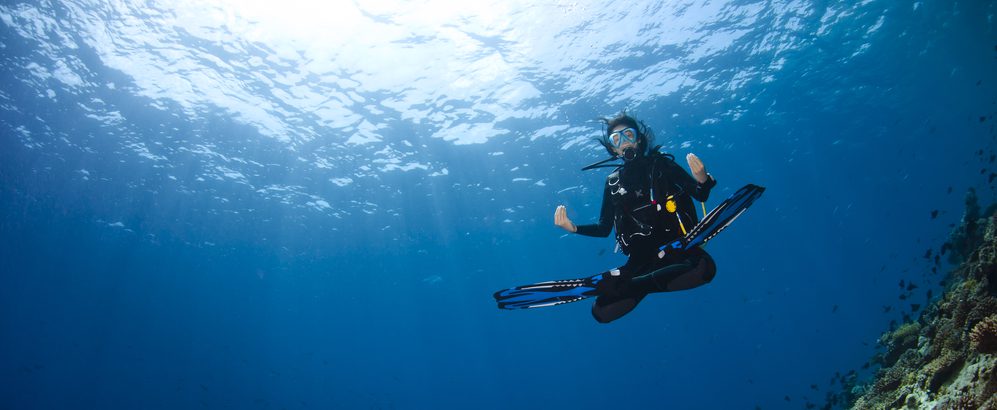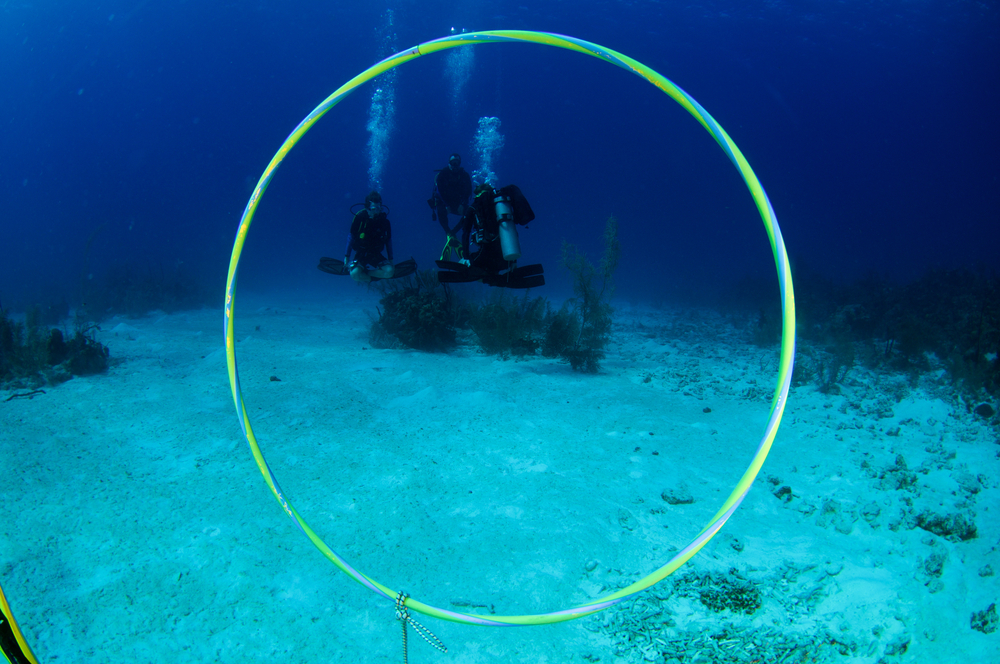For those of you wondering, “I learned about buoyancy control when I got certified, do I really need to take another course?” Fair question.
Short answer – unless you are one of the very rare people who could float like a genie in their Open Water Diver course, then YES, you should take the Peak Performance Buoyancy Specialty course. Here are six major reasons why:

As with most specialties, the Peak Performance Buoyancy Specialty course is easier and more fun than the Open Water Diver course. I’m not saying the open water course isn’t fun, but the transformation from nondiver to certified diver takes a lot more time and effort than improving the skills you already have. There’s no exam at the end of the Peak Performance Buoyancy Specialty course, and, because there are only two dives, you can complete the course in just 1-2 days.
Two bonus reasons: If you don’t feel 100% comfortable diving with just a buddy, the Peak Performance Buoyancy Specialty course will help you:
Gain diving experience with a PADI Professional at your side Improve your skills and build confidence
Can you get better at buoyancy on your own? Yes, but it can take a long time, especially if you don’t dive regularly.
Dialing in your buoyancy independently can be challenging because:
Many divers wear too much weight and don’t realize it Humans aren’t used to moving in three dimensions Adjusting your body position is counterintuitive. If you move a lot, you’re doing it wrong.Do yourself a huge favor and sign up for the Peak Performance Buoyancy Specialty course (PPB for short).
Some divers may feel reluctant to take PPB. As though enrolling in the class is like admitting they don’t have good buoyancy. In fact, the opposite is true. If you’re someone who feels awkward about signing up for PPB, try using one of the reasons below.
“I’m taking Peak Performance Buoyancy because:
I shoot underwater photos/videos. I’m working towards my Master Scuba Diver™ rating and PPB is one of the five specialties I’m taking. Protecting underwater habitats is important to me, I don’t want to be that person.”The Peak Performance Buoyancy Specialty includes two dives and (usually) a buoyancy clinic in a pool or calm, open water environment. You can start your training anytime, anywhere with PADI eLearning®. During the online portion of the course, you’ll learn the fundamentals of underwater buoyancy and preview the skills you’ll practice with your instructor. PADI Club™ members get a 20% discount on the Peak Performance Buoyancy Specialty course eLearning in addition to other PADI online courses.
During your first in-water training session, your instructor will dial in how much weight you need when scuba diving. When I took PPB, my instructor discovered I was unconsciously holding my breath a little bit. Once I fully relaxed, I was able to reduce my weight by 20%. My instructor also had me try ankle weights to streamline my body position.
Another helpful exercise we did was to practice hovering in front of a fixed object without rising or sinking more than 1 meter/3 feet. I parked myself near the step ladder at the deep end of the pool and tried to keep the bottom step at eye level. Doing this helped me realize how much I moved up and down when I thought I was (more or less) stationary.
By the end of the session, I was ready to try swimming through hula hoops suspended mid-water. NOTE: This isn’t a requirement to pass the course; it’s just a fun challenge.

Have questions about scuba diving buoyancy? Ready to become a pro at buoyancy control? Contact a PADI Dive Center or Resort.
Begin the Peak Performance Buoyancy Specialty Course Now
Share This